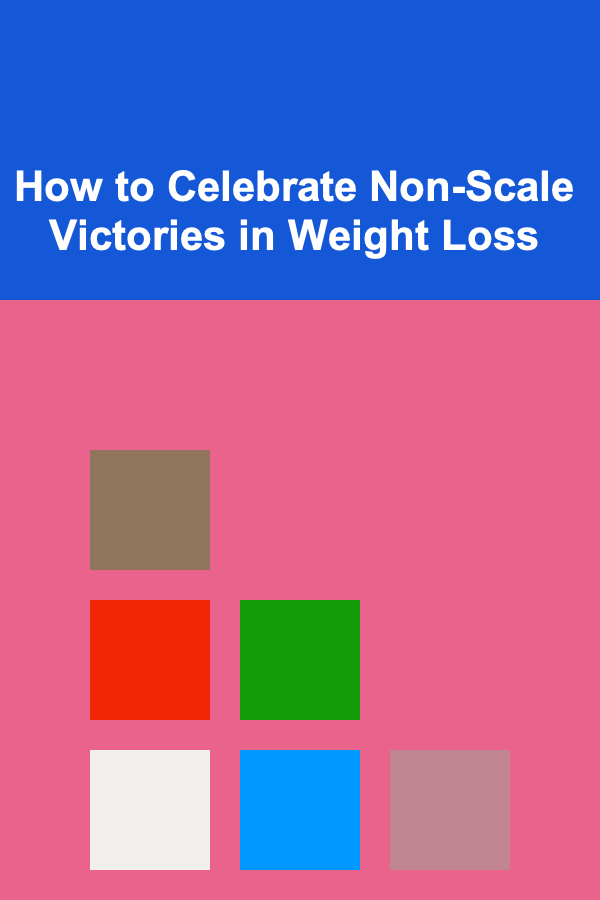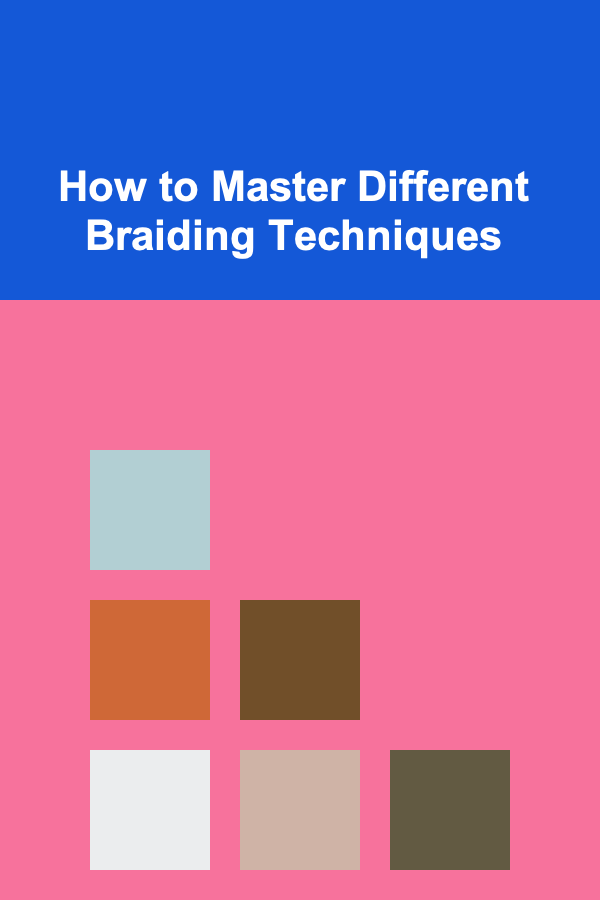
10 Tips for Creating Origami Modular Sculptures
ebook include PDF & Audio bundle (Micro Guide)
$12.99$7.99
Limited Time Offer! Order within the next:
Not available at this time

Origami, the ancient Japanese art of paper folding, has fascinated people for centuries with its elegance and precision. While traditional origami often focuses on creating individual figures like cranes, flowers, or animals, modular origami takes the craft to a whole new level. Modular origami involves assembling multiple folded pieces of paper into complex sculptures, which can range from simple geometric shapes to intricate, multi-dimensional structures. These sculptures can be incredibly satisfying to create, and their beauty lies in the symmetry and precision of the pieces coming together.
Creating modular origami sculptures is an art that requires patience, attention to detail, and a systematic approach. Whether you're a beginner or an experienced folder, the following tips will help guide you in creating your own modular origami masterpieces.
Start with the Right Paper
The foundation of any origami sculpture is the paper you use. For modular origami, the quality and size of the paper can make a significant difference in the final result. Choosing the right paper is one of the most important steps in the process.
What to consider when selecting paper:
- Size: Modular origami pieces often require uniformity in size. Typically, square sheets of paper are preferred, and they should all be the same size for the final assembly to work well. A common starting size is 3-inch (7.5 cm) squares, though the size can vary depending on the complexity of the sculpture.
- Thickness: You'll want paper that is thick enough to hold its shape, but not too thick to make the folds difficult to execute. Standard origami paper or lightweight cardstock works well for most modular projects.
- Texture and Color: The color and texture of the paper can impact the aesthetic of your sculpture. Choose vibrant colors or patterns that complement the design you're creating. Solid colors are often preferred, especially for geometric shapes, to ensure the folds stand out clearly.
By selecting the right paper, you ensure that your pieces will be crisp, easy to fold, and stable once assembled.
Master Basic Origami Folds
Before diving into modular origami, it's crucial to master the basic origami folds. While modular origami involves combining multiple pieces, each piece still requires a series of precise folds that form the basic structure.
Key folds to practice:
- Valley and Mountain Folds: These are the fundamental folds used to create most origami shapes. The valley fold creates a "V" shape, while the mountain fold creates a peak.
- Squash Fold: This fold is essential for creating more complex shapes. It involves opening a flap of paper and flattening it out into a new shape.
- Reverse Fold: A reverse fold allows you to change the direction of a fold. This is frequently used in modular origami to create intricate angles and turns.
- Inside and Outside Reverse Folds: These folds are used to change the direction of a section of the paper in a precise manner.
Mastering these basic folds will give you the foundation to tackle more complex modular origami designs.
Choose the Right Modular Design
Modular origami can range from relatively simple models to intricate multi-layered sculptures. Choosing the right design depends on your skill level and the materials you have on hand.
Some popular modular origami designs:
- Sonobe Unit: One of the most common modular units, the Sonobe unit is a simple design that can be assembled into a variety of three-dimensional shapes, including pyramids and polyhedra.
- Kusudama Balls: These spherical sculptures are made by assembling multiple identical units, often connected with glue or thread. They are popular for decorative purposes and can be made in various sizes and colors.
- Modular Stars: Stars and other polyhedral shapes can be created by folding paper into units that are interlocked in a star-like pattern. These models often create stunning geometric sculptures.
- Flower Shapes: Modular origami is not limited to geometric forms. Modular flower sculptures are intricate, colorful, and perfect for decoration.
When selecting a design, consider the number of units required and how complex the folding process will be. Starting with simpler designs allows you to build up your confidence before tackling more advanced sculptures.
Understand the Role of Units in Modular Origami
Each modular origami sculpture is created by folding and assembling individual units. These units serve as the building blocks for the final design, and their assembly is what gives the sculpture its structure. Understanding the function of each unit and how it fits into the overall model is crucial.
How to create and organize your units:
- Consistency: Ensure that all units are folded exactly the same way to achieve a uniform and precise assembly. Even slight variations can lead to a misshapen sculpture.
- Assembly Plan: Modular origami designs often involve joining pieces through slots or interlocking tabs. Understanding how these units will connect is key to ensuring the model holds together. Some units require the use of glue, while others can be assembled without adhesives.
- Pre-folding Units: It's often more efficient to pre-fold a batch of units before you begin assembling the sculpture. This allows you to focus solely on the construction process when it's time to put the model together.
By carefully planning your units and how they interconnect, you ensure that the final structure will be both stable and visually appealing.
Use Proper Assembly Techniques
Once you have folded your individual units, it's time to assemble them into the final sculpture. This step is where your attention to detail really matters. The assembly process can be tedious, and it requires patience, precision, and organization.
Key tips for assembling your modular origami sculpture:
- Start from the Base: Begin assembling the sculpture from the bottom and work your way up. This helps provide stability and ensures that the structure is built from a solid foundation.
- Use a Template or Guide: If you're working with a complex design, it can be helpful to use a visual guide or template to keep track of where each unit goes. This can prevent mistakes and keep you on the right track.
- Be Gentle: Modular origami sculptures are delicate, so avoid applying too much pressure when connecting units. Handle each piece gently to avoid damaging the paper or distorting the shape.
- Adjust as You Go: If a piece doesn't fit as expected or the shape is slightly off, make small adjustments as you continue assembling. Small tweaks during the process can help prevent major issues down the line.
By taking your time with assembly, you'll achieve a cleaner, more professional-looking result.
Experiment with Color and Pattern
One of the exciting aspects of modular origami is the ability to experiment with colors and patterns. The visual appeal of your sculpture can be dramatically influenced by the colors of the paper you choose and how you arrange them.
How to effectively use color:
- Contrast: Use contrasting colors to highlight certain aspects of the sculpture. For example, choose one color for the base units and a different color for the outer layers to create a striking effect.
- Symmetry: If your sculpture involves multiple layers or geometric patterns, symmetry can enhance the overall aesthetic. Use the same color for symmetrical sections or alternate colors to create a repeating pattern.
- Patterns and Prints: Printed or patterned paper can add an extra dimension to your sculpture. However, be mindful of busy patterns that might detract from the overall design. Stick to simpler patterns if you want the focus to remain on the shape and structure.
Color is a powerful tool in modular origami, and experimenting with different combinations can yield stunning results.
Practice Patience
Modular origami is an art that requires patience. Depending on the complexity of your design, you may need to fold hundreds of individual pieces and spend hours putting them together. The process can be long and intricate, but the end result is often incredibly rewarding.
Tips for maintaining patience:
- Break it down: Don't try to do everything in one sitting. Break the task into manageable chunks. Focus on folding a certain number of units each day, and assemble the sculpture over time.
- Take breaks: If you're feeling frustrated or tired, take a break. This will help you maintain focus and avoid making mistakes due to fatigue.
- Enjoy the process: Modular origami is not just about the end result. The folding and assembling process is meditative and enjoyable, so try to stay present and enjoy the creative journey.
By embracing patience, you'll not only enjoy the process more, but you'll also improve the quality of your work.
Avoid Overcomplicating Designs
While complex designs can be impressive, it's important to remember that simplicity can be just as beautiful. Overcomplicating your sculpture can lead to mistakes and frustration, especially for beginners.
Tips for keeping things simple:
- Start with simple designs: If you're new to modular origami, begin with basic models and gradually progress to more complicated designs as you gain experience.
- Focus on neatness: A well-folded, simple design can often look more elegant than a messy, complicated one. Pay attention to the precision of your folds, and keep the assembly clean and orderly.
Remember, simplicity can create striking beauty, and a simpler design can often be more impressive than one that is overly intricate.
Use Glue Sparingly
While modular origami often involves interlocking pieces without glue, there are times when a bit of adhesive can be useful. For instance, some designs require glue to hold the pieces together securely, especially for larger or more intricate models.
How to use glue effectively:
- Choose the right adhesive: Use a clear-drying glue that won't be visible in the final sculpture. Craft glue or a glue stick works well for modular origami.
- Minimal use: Only use glue where absolutely necessary. Too much glue can make your sculpture look messy and can weigh down the pieces.
- Apply with precision: Use a small amount of glue and apply it carefully to the points where the units connect. This ensures that the pieces stay in place without excess glue oozing out.
Glue can be a helpful tool in modular origami, but use it sparingly to preserve the aesthetic of the design.
Celebrate Your Achievements
Once you've completed your modular origami sculpture, take a moment to appreciate your hard work. Modular origami can be challenging, but the satisfaction of seeing a complex design come together is immense. Take photographs of your work and share it with others, or simply admire it in your space.
Celebrating your achievements not only helps you appreciate your craftsmanship but also motivates you to take on new, even more challenging projects in the future.
Conclusion
Creating origami modular sculptures is a rewarding and artistic endeavor that combines precision, creativity, and patience. By following these ten tips, you can embark on your journey of folding and assembling intricate models that are as visually captivating as they are satisfying to create. Whether you're new to origami or an experienced folder, modular origami offers endless possibilities for artistic expression. So, gather your paper, fold with intention, and let your imagination take shape in the form of beautiful, multi-dimensional sculptures.

How to Celebrate Non-Scale Victories in Weight Loss
Read More
How to Clean and Maintain Hardwood Floors
Read More
How to Store Baking Supplies Neatly for Easy Access
Read More
Negotiating Your Salary: Tips for Getting What You're Worth
Read More
How to Master Different Braiding Techniques
Read More
How to Create a Detailed App Development Budget
Read MoreOther Products

How to Celebrate Non-Scale Victories in Weight Loss
Read More
How to Clean and Maintain Hardwood Floors
Read More
How to Store Baking Supplies Neatly for Easy Access
Read More
Negotiating Your Salary: Tips for Getting What You're Worth
Read More
How to Master Different Braiding Techniques
Read More